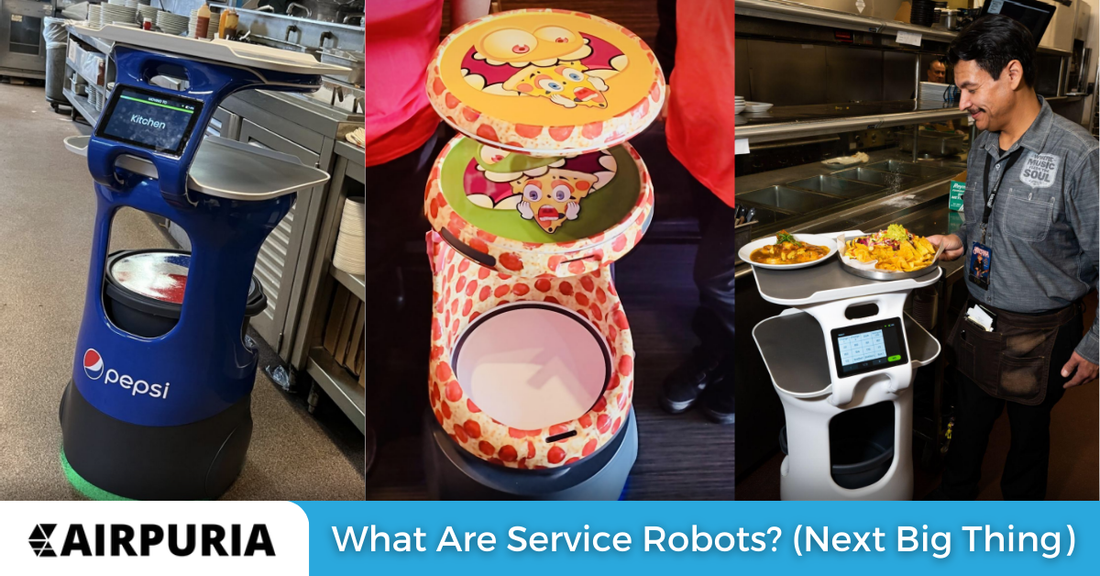The future has finally arrived! Service robots are transforming many industries and revolutionizing the way humans perform tasks. Unlike industrial robots that operate in restricted environments performing repetitive actions, service robots are designed to assist human activities in semi-structured environments. They are the next frontier in robotics and automation that will shape the future!
What Is a Service Robot?
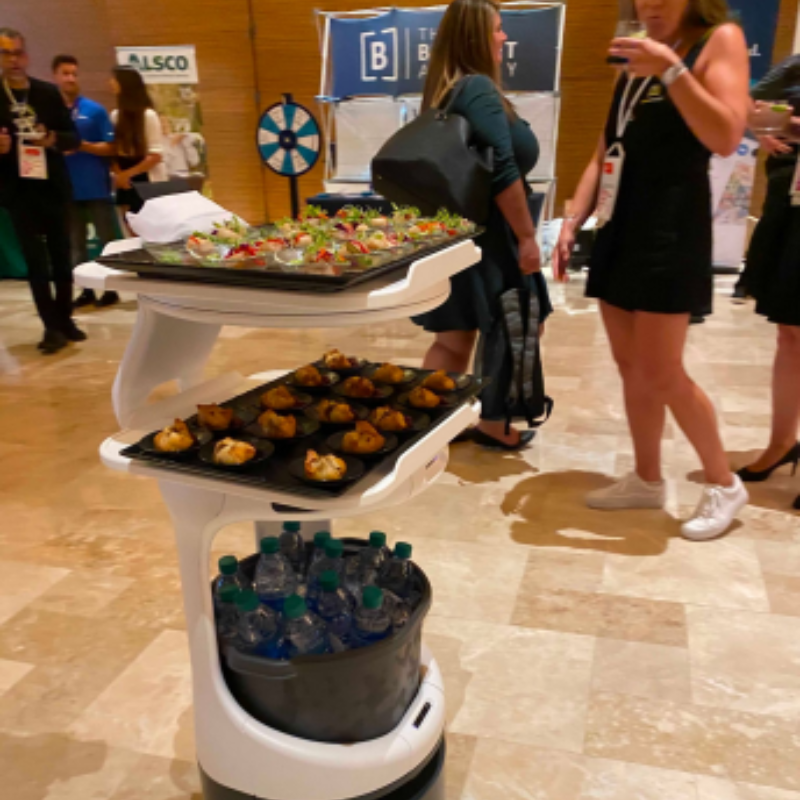
A service robot is a robot that performs useful tasks for humans or equipment, excluding industrial automation applications. According to the International Federation of Robotics (IFR), service robots assist in personal use or professional use, typically by performing much-needed tasks.
Service robots have varying degrees of autonomy ranging from full teleoperation to fully autonomous decision-making systems. They are equipped with sensors, controls, and artificial intelligence software to perceive their surrounding environment, interact with it and perform intended tasks based on their designed features.
Service robots can be classified into professional and personal service robots. Professional service robots perform tasks for business customers, whereas personal service robots focus on tasks for personal and private use.
Types of Service Robots
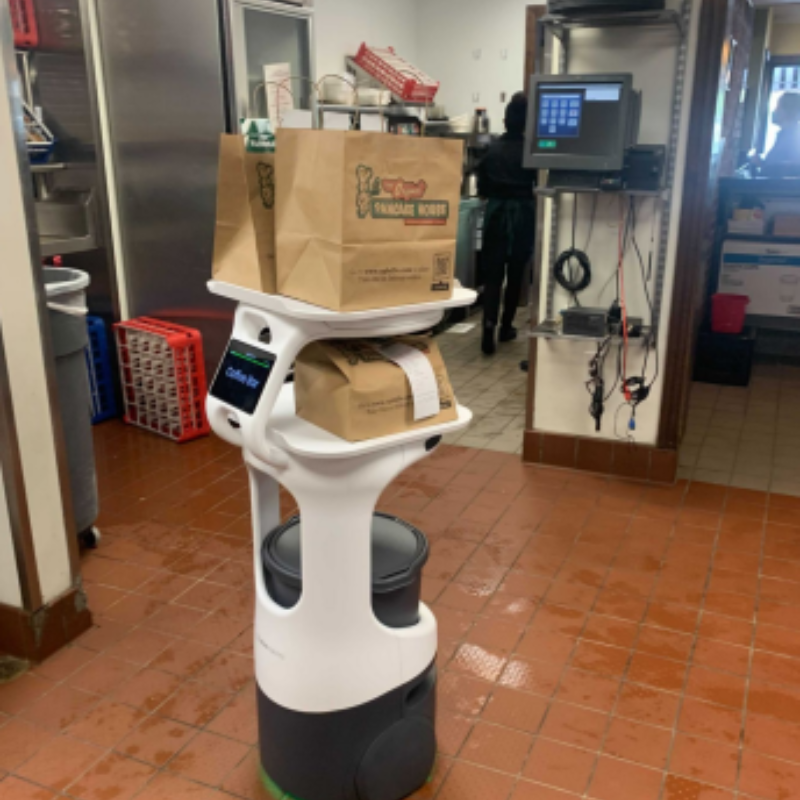
There are many types of service robots designed for a wide variety of applications across numerous industries and domains.
Here are some of the most common categories:
Domestic Service Robots
Domestic service robots like robotic vacuum cleaners, lawnmowers, and swimming pool cleaners are designed for personal use at home. They perform domestic chores to assist with cleaning, lawn mowing, and other repetitive household tasks. Popular examples include the Roomba, Robomow, and PoolRobot automatic pool cleaners.
Office Service Robots
Office service robots automate various tasks in office environments to improve work efficiency and productivity. Some examples include delivery robots for transporting mail and packages, telepresence robots for remote meetings, and cleaning robots.
Healthcare Service Robots
In healthcare, service or medical robots assist doctors and nurses with tasks like delivering medications and linen, sanitizing patient rooms, and assisting with minor procedures. They help improve hospital workflows while reducing the risk of healthcare-associated infections.
Logistics Service Robots
Robots are playing an increasing role in warehouse logistics and last-mile deliveries. They automate internal logistics, assist in inventory management and enable contactless delivery services.
Retail Service Robots
Retail robots interact with customers in stores, provide information, guide shoppers, and automate inventory scanning and shelf monitoring tasks. Some also perform delivery services bringing items directly to customers' homes.
Hospitality and Restaurant Service Robots
Robots like Servi assist with various tasks in restaurants, hotels, and other hospitality establishments. They include customer interaction, food running, and the transportation of dishes back to the kitchen. Airpuria is an authorized dealer of advanced Servi service robots currently revolutionizing the hospitality industry.
Event Service Robots
Event robots interact with attendees providing information, directions, snacks, and drinks. Some also handle registration, ticket verification, access control, and other event logistics.
Agricultural Robots
Agricultural service robots and drones automate tasks like seeding, crop spraying, harvesting, and weed control to improve efficiency on farms and orchards. Some are also used for inspection and environmental monitoring.
As you can see, service robots come in many forms and are deployed across numerous industries. The applications are constantly growing as technology advances and become more affordable.
Features of Service Robots
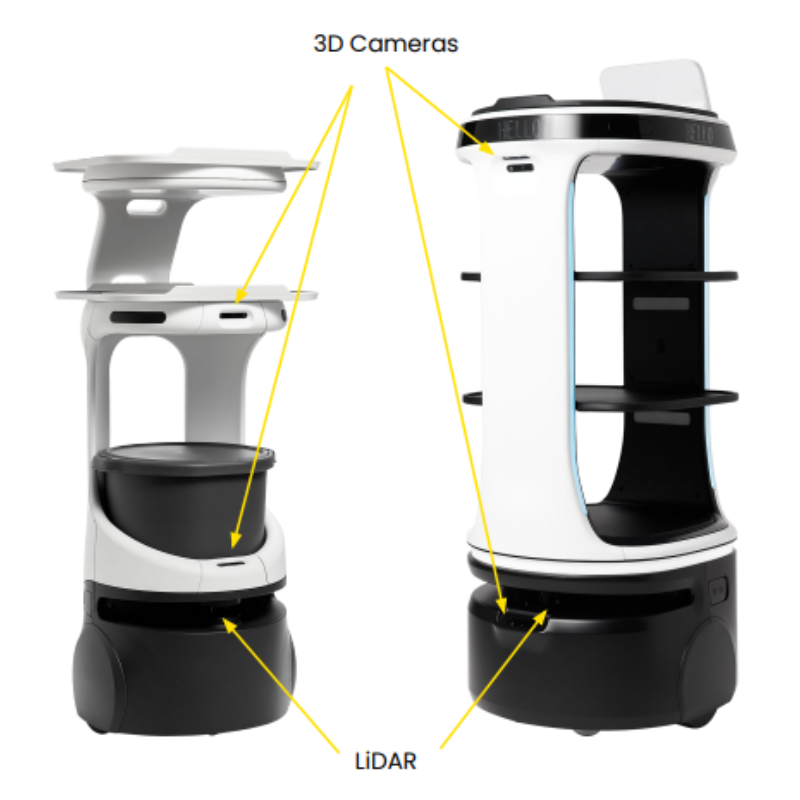
Service robots have some common key features that set them apart from industrial robots:
-
Partial Autonomy: A partially autonomous service robot can perform tasks with active human intervention or operate semi-autonomously with supervision. Most service robots today have partial autonomy, unlike fully autonomous systems.
-
Focus on Tasks for Humans: They are designed to perform useful tasks that benefit human beings rather than automated manufacturing processes.
-
Flexibility: Service robots can be manually overridden and reprogrammed for new tasks providing flexibility, unlike rigid industrial robots.
-
Interact with Human Beings: Many service robots, like hospitality robots and domestic robots, directly interact with humans in shared spaces.
-
Varied Environments: Service robots operate in human environments that are semi-structured, unlike the thoroughly controlled settings of industrial robots.
-
Safety Features: Service robots are equipped with various sensors and utilize control algorithms to operate safely in proximity to humans.
-
Mobility: Many service robots are mobile, allowing them to transport items and navigate through changing environments, whereas industrial robotic arms are fixed in place.
Benefits of Service Robots
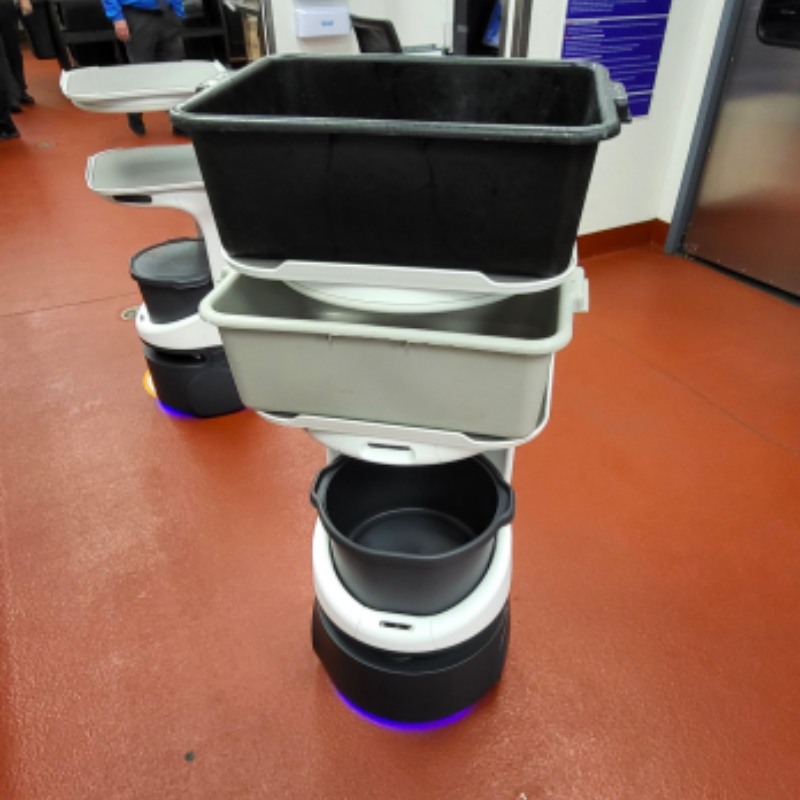
Here are some of the top advantages of using service robots:
-
Improved Efficiency - By automating repetitive and time-consuming tasks, service robots allow human workers to focus on higher-value activities, thereby improving productivity.
-
Enhanced Safety - Some robots can take over dull, dirty, or dangerous jobs - reducing workplace hazards and preventing injuries. In addition, they can operate safely in toxic environments.
-
Increased Uptime - Robots don't need breaks or sleep. They provide 24/7 reliable operations with minimal downtime for maintenance (depending on how long their battery life is).
-
Reduced Costs - Although the upfront costs can be high, service robots provide long-term cost savings when compared to other expenses. Airpuria offers the ability to lease service robots as a more affordable option.
-
Consistent Quality - Robots perform repetitive tasks consistently without variation or errors, ensuring high-quality output.
-
Better Customer Experience - Robots augment human capabilities allowing staff to spend more time with customers and on improving service levels. Customers also find retail robots fun and novel.
-
New Capabilities - Robots can be equipped with sensors and tools that go beyond human capabilities allowing new applications across many industries.
-
Business Continuity - They can also allow operations to continue seamlessly during disruptions like labor shortages or health emergencies, ensuring business continuity.
The benefits translate directly to the bottom line for most businesses. With advances in artificial intelligence, the new ability to lease these robots, and occasional labor challenges, service robot adoption is poised for massive growth in the coming years. Businesses that leverage robotics early will have a clear competitive advantage.
Applications of Service Robots

Service robots are being deployed across a vast array of industries to transform business operations. Here are some of the top applications:
Restaurants and Hospitality
Service robots like Servi assist servers by transporting food from the kitchen to tables without spillage. They also intelligently navigate through the busy environment avoiding collisions. Robots optimize workflows allowing wait staff to provide better customer service.
Hospitals and Healthcare Facilities
Healthcare service robots transport pharmaceuticals, meals, laundry, and hazardous waste, handling these routine yet crucial hospital logistics tasks. On the other hand, telepresence robots enable doctors to virtually round on patients and visitors, reducing contagion risks. Robots also provide companionship and entertainment for patients during their stay, especially in pediatric cases.
Warehouses and Logistics
Warehouse robots automate inventory management, accelerate order fulfillment, handle material transport, and assist human workers. This improves speed and accuracy, resulting in same-day or next-day deliveries. Logistics robots even handle last-mile deliveries in urban areas.
Hotels
Hotel service robots deliver amenities to guest rooms, handle concierge services and interact with visitors. These mobile robots unlock doors with RFID cards, navigate autonomously and call elevators, thus automating routine deliveries and allowing staff to provide a better guest experience.
Airports
Airport robots check passengers in, print bag tags, provide directions, scan passports, and answer questions, whereas baggage handling robots transport suitcases, reducing mishandled luggage. In addition, cleaning robots sanitize airport terminals while autonomous tugs tow aircraft.
Offices
Office robots make coffee, distribute mail, handle meeting room bookings, provide telepresence services, and interact with visitors. Security robots, on the other hand, patrol premises monitoring for risks and cleaning robots to maintain hygienic workspaces free of harmful bacteria and viruses.
Schools and Universities
Education robots tutor and mentor students providing personalized lessons and learning experiences, while telepresence robots allow remote lecturers and experts to interact with students virtually. In addition, delivery robots handle distribution tasks on large campuses.
The applications of service robots are endless. As the demand for automation increases, we will continue seeing more innovative deployments across many industries.
What to Look for in Service Robots
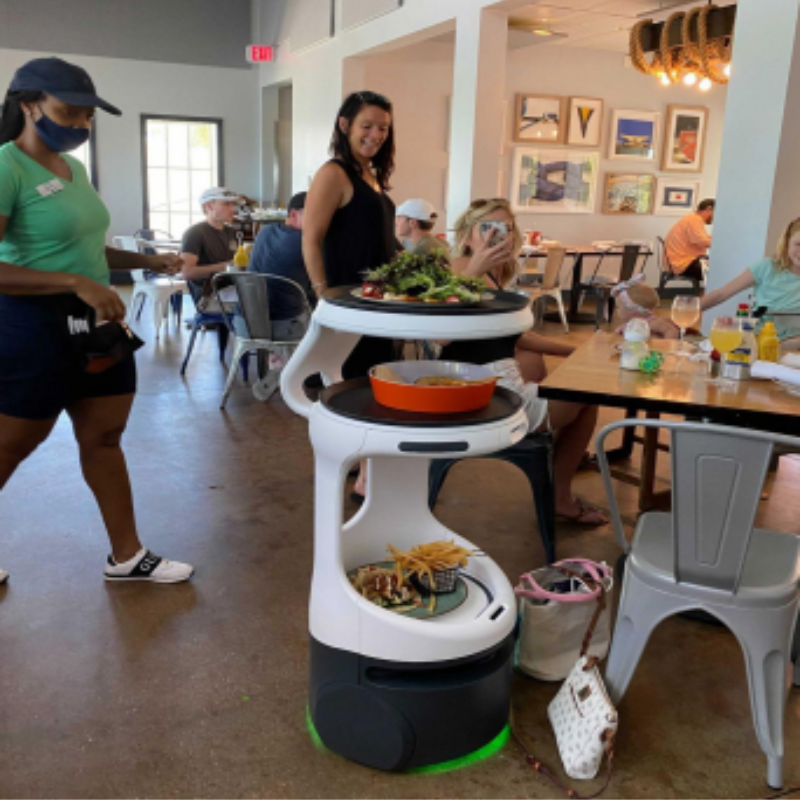
Here we cover some additional details on how they work, key benefits, top applications, and frequently asked questions.
How Do Service Robots Work?
Service robots are autonomous machines that operate based on their internal control systems and software algorithms to perform necessary tasks. Here is a quick overview:
-
Sensors - Robots use cameras, LiDAR, sonar, radars, and other sensors to perceive their environment.
-
Localization - Using sensor data and simultaneous localization and mapping (SLAM) algorithms, robots can identify their location.
-
Navigation - Based on the mapped environment, robots plan collision-free paths to their destinations.
-
Object Detection - Computer vision and deep learning help robots detect, categorize and track objects.
-
Motion Control - Robots have wheels, joints, and actuators to physically move through spaces and manipulate objects.
-
Artificial Intelligence - AI planning algorithms help robots decide on actions to achieve their goals and tasks.
-
Human-Robot Interfaces - Robots utilize voice control, touch screens, and other interfaces to interact with humans.
-
Teleoperation - Robots can be controlled remotely by human operators when required.
These technologies come together in a robot's embedded system guiding it to perform useful tasks efficiently while safely navigating human environments.
Lease Advanced Servi Service Robots
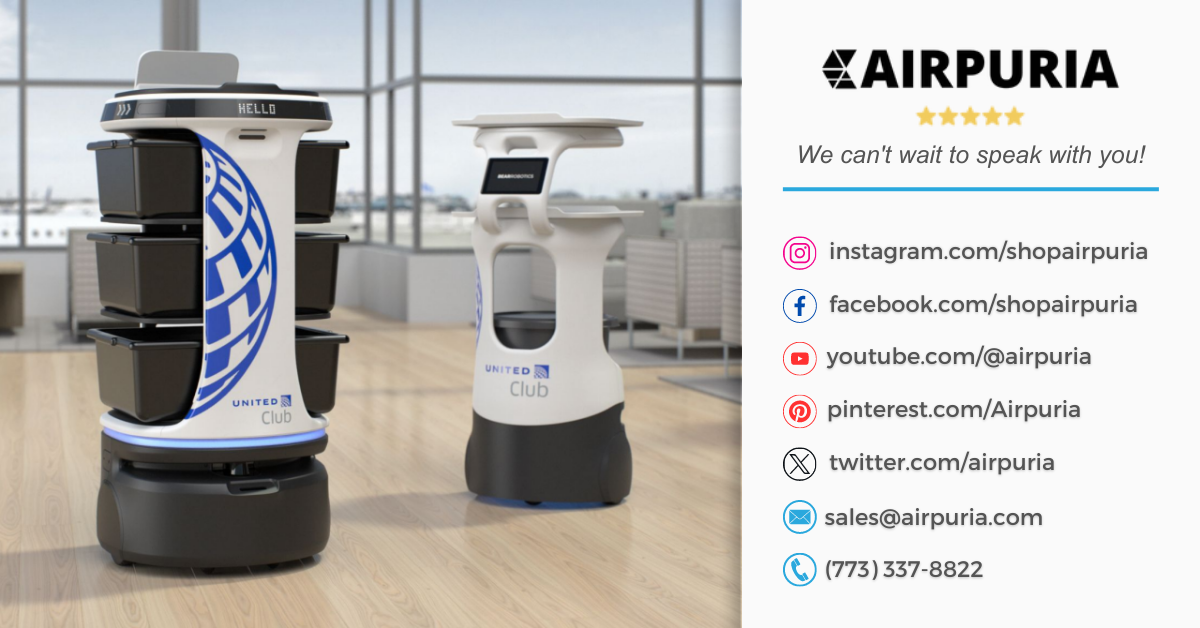
Airpuria offers flexible leasing options for the Servi line of advanced service robots from Bear Robotics. Servi robots optimize workflows in restaurants, hotels, and other hospitality establishments by automating repetitive tasks like running food and transporting dishes.
With four models available, there is a Servi robot perfect for businesses of every size:
-
Servi - The original compact model is ideal for small spaces
-
Servi Plus - Expanded capacity and battery life for high-volume operations
-
Servi Lift - Specialized model integrates with elevators for multi-story deliveries
Leasing includes hassle-free maintenance and 24/7 customer support. Learn more about the benefits of Servi leasing.
Interested in the Servi Lift? Join the 2023 waitlist here: https://airpuria.com/pages/about-servi-lift
Flexible Leasing Terms
Leasing a Servi through Airpuria offers flexible terms to meet your business needs and budget:
-
12-Month Lease - Best for short-term needs
-
24-Month Lease - Ideal for budgeting predictability
-
36-Month Lease - Lowest monthly cost for long term
There are no hidden fees. Lease pricing includes all maintenance, warranty, and customer service costs for the full term.
Automate for Efficiency with Servi
Adding a Servi robot to your team provides immediate benefits:
-
Increased workflow efficiency
-
More time for staff to focus on guests
-
Consistent quality service 24/7
-
Enhanced customer satisfaction
-
Lower operating costs
Bring the benefits of automation to your business today with flexible Servi leasing. Contact us to get started!
Service Robot FAQ
What are the types of service robots?
Some common categories include domestic robots, office robots, healthcare robots, hospitality robots, logistics robots, retail robots, inspection robots, construction robots, and agricultural robots among many others.
How does a service robot work?
Service robots utilize sensors, artificial intelligence, mobility systems, and interfaces to autonomously perform much-needed tasks in human environments. They operate based on internal control systems and software.
What does a service robot do?
Service robots automate many repetitive and routine tasks to assist human activities across many industries like transporting items, providing information, and interacting with people.
What is an example of a service robot?
Popular examples include robotic vacuums for home cleaning, inventory robots in warehouses, food runner robots like Servi in restaurants, and telepresence robots for virtual meetings.
What is a customer service robot?
A customer service robot interacts with retail shoppers, restaurant guests, hotel visitors, and other customers, providing information, answering questions, and processing transactions to enhance customer experience.
Learn More
Service robots are poised for explosive growth in the coming years. To learn more about advanced service robots available through Airpuria, click here.
Contact us today to discuss automating tasks with service robots. Our team is ready to help assess your needs and deploy the perfect robotics solution for your business.
-
Reach out for assistance choosing the right service robot at sales@airpuria.com Call 773.337.8822 to speak with a service robot expert for personalized guidance
Additional Service Robot Resources:

